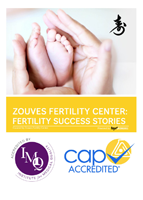
Vitrification is a technique for egg and embryo cryopreservation that was developed and perfected in Japan by Dr. Masashige Kuwayama (2000) of the Kato Ladies Clinic.
Vitrification literally means, “changing into glass” and differs significantly from slow cooling methodologies of the past. Eggs are frozen so quickly that the egg instantly changes into a chemical glass that is maintained at ultra low temperatures.
With the previous slow freeze method of banking eggs, only 6% of those frozen would survive the freezing and thawing process. Today with vitrificaiton over 90% of eggs survive.
- With vitrification, the egg or embryo goes from room temperature to -196 Celsius in a matter of milliseconds, too quickly for any significant ice crystal formation.
- Vitrification has increased the survival rate of frozen eggs and embryos to over 90% as compared to 10% for eggs and 70% for embryos with the previously used “slow freeze” method.
Pregnancy rates from frozen embryo transfers are now at the point where the success rate of frozen cycles exceeds the success rate of fresh transfers when a woman is stimulated and supplies eggs for her own IVF cycle.
Vitrification has single-handedly resulted in two major changes across assisted reproduction techniques:






